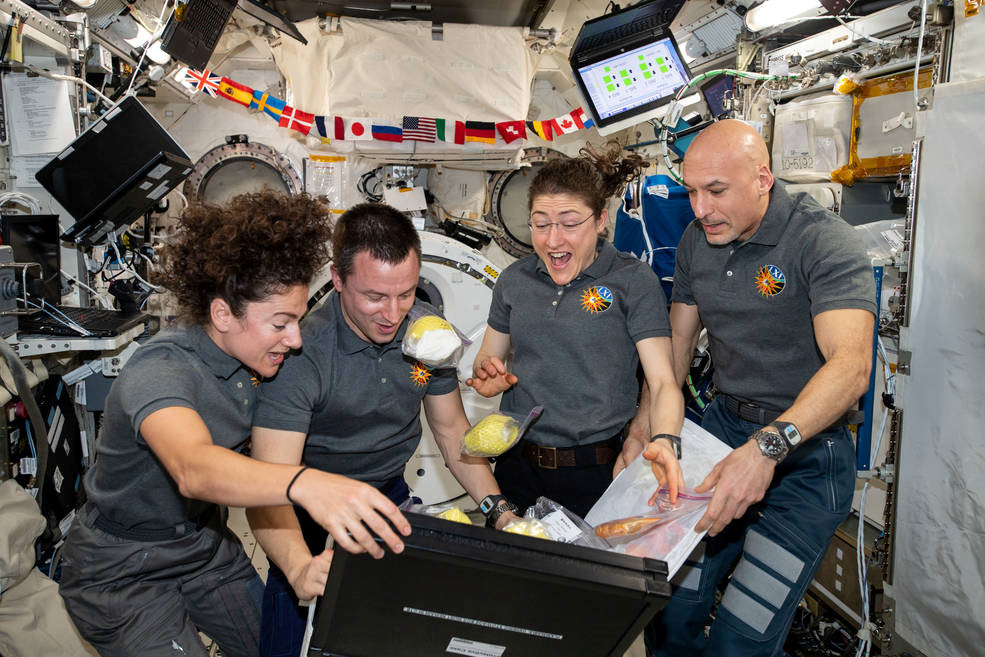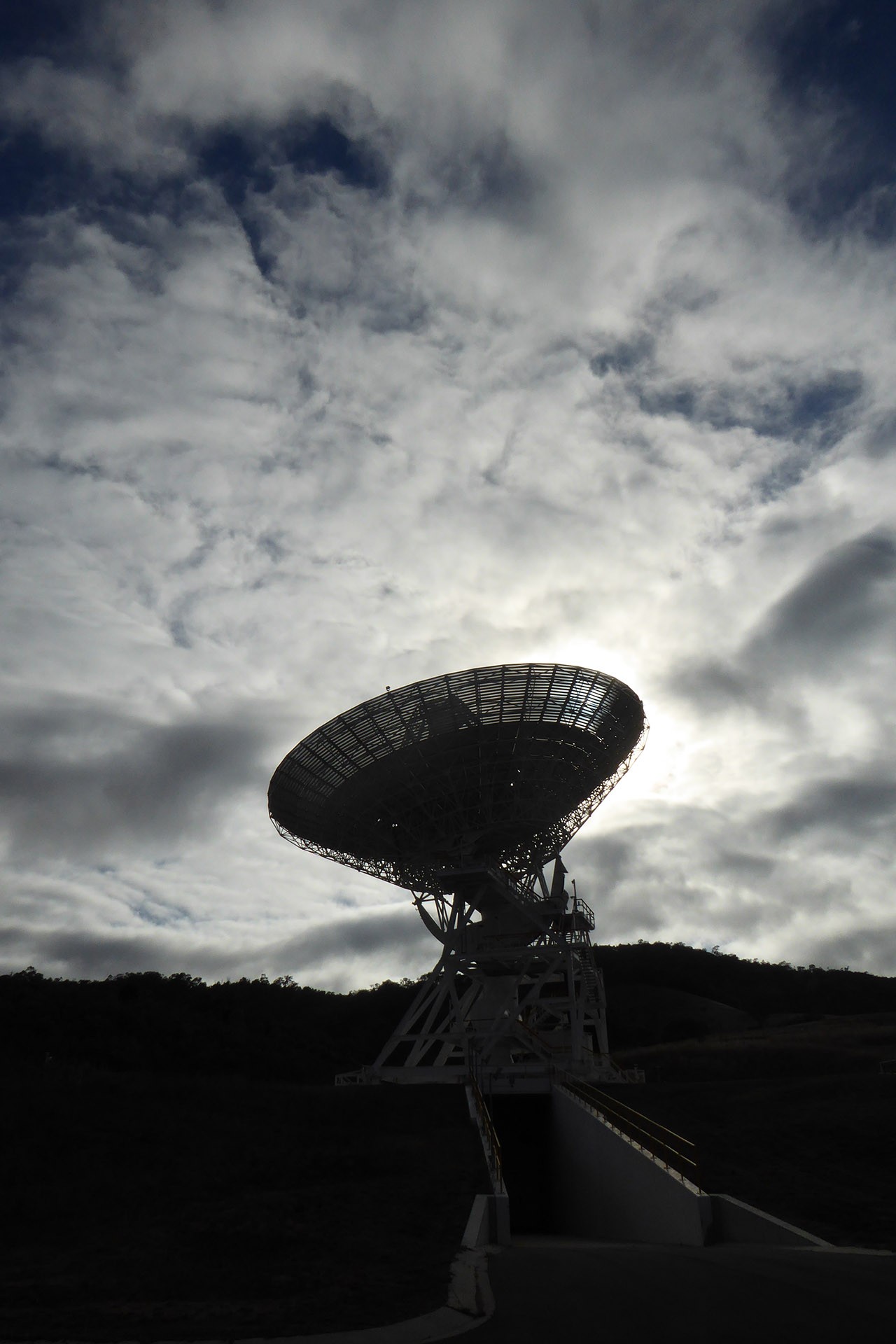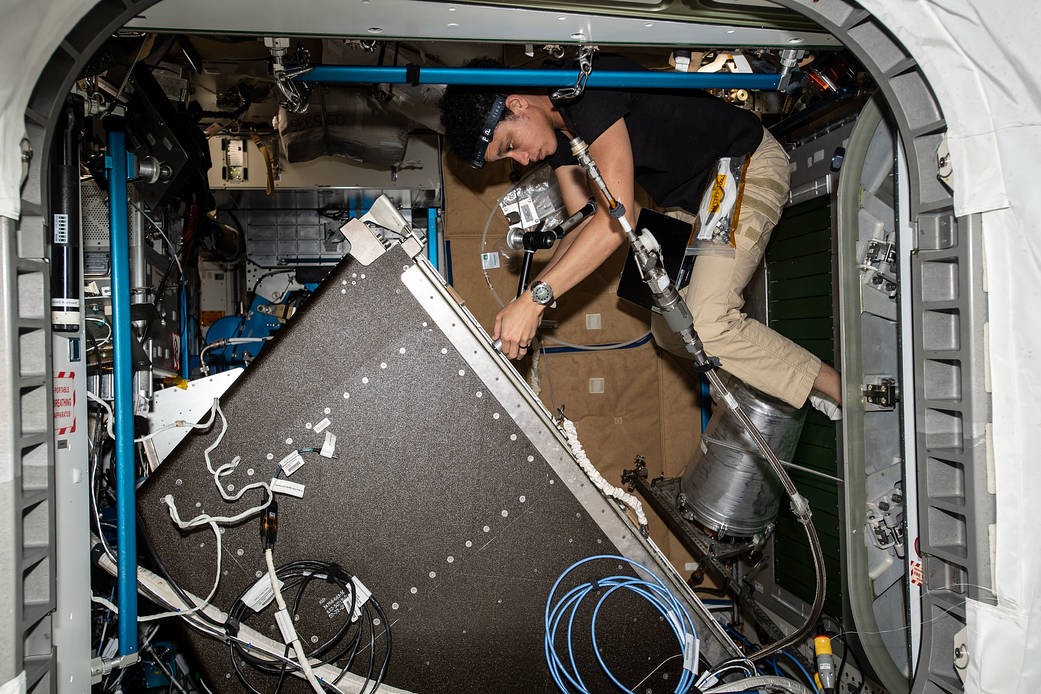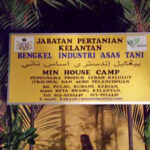Embarking on an interplanetary journey? The Earth To Mars Travel Time is a significant factor for space missions and something to consider before departure. SIXT.VN understands the excitement and curiosity surrounding space exploration. We will provide the approximate travel duration, the challenges, and what to expect during such a voyage. Let’s delve into the fascinating aspects of planning a trip to Mars, considering the time it takes, the importance of self-sufficiency, and innovative approaches to ensuring astronaut well-being during deep space missions.
1. Understanding Earth to Mars Travel Time
Planning a trip to Mars involves understanding many factors, with the travel time being one of the most crucial. Let’s explore the Earth to Mars travel time and factors influencing it.
1.1. What is the Average Earth to Mars Travel Time?
The average Earth to Mars travel time is approximately seven months. This duration can fluctuate depending on the orbital alignment of Earth and Mars. This alignment affects the distance between the two planets, influencing the journey’s length. According to NASA, the distance between Earth and Mars varies. NASA’s research emphasizes the importance of optimal launch windows for minimizing travel time and resource consumption. This average Earth to Mars travel time helps space agencies and researchers plan missions with precision.
1.2. Factors Influencing Travel Time
Several factors influence the Earth to Mars travel time:
- Orbital Alignment: The positions of Earth and Mars in their orbits significantly impact the distance between them. Launch windows occur when the planets are favorably aligned, reducing travel time.
- Spacecraft Velocity: The speed at which the spacecraft travels directly affects how quickly it can reach Mars. Faster speeds can shorten the travel time but require more fuel and advanced propulsion systems.
- Trajectory Design: The path the spacecraft takes through space is critical. A direct trajectory is the shortest but requires more energy. More complex trajectories, like the Hohmann transfer orbit, can save fuel but increase travel time.
- Technological Advancements: Advances in propulsion technology, such as ion propulsion or nuclear thermal propulsion, could significantly reduce travel times. These technologies are still under development but hold promise for future missions.
1.3. Comparison to Lunar Travel
Compared to the three-day lunar trip, the Earth to Mars travel time presents a substantial difference. This extended duration introduces unique challenges, including:
- Increased Exposure to Space Radiation: Longer travel times mean astronauts are exposed to more cosmic radiation, increasing health risks.
- Greater Need for Self-Sufficiency: Due to the increased distance and travel time, astronauts must be more self-sufficient, capable of handling emergencies and equipment failures with minimal support from Earth.
- Psychological Challenges: Spending months in the confined environment of a spacecraft can lead to psychological stress. Support systems and strategies must be in place to mitigate these effects.
2. Challenges of Long-Duration Space Travel
Long-duration space travel poses several challenges that must be addressed to ensure the safety and success of missions.
2.1. Health Risks
Extended space travel presents significant health risks to astronauts, including:
- Radiation Exposure: Prolonged exposure to cosmic radiation can increase the risk of cancer and other health issues. NASA is actively researching ways to shield astronauts from radiation.
- Bone Density Loss: The lack of gravity in space leads to bone density loss. Exercise and medication are used to combat this effect.
- Muscle Atrophy: Similar to bone density loss, muscles weaken without gravity. Regular exercise is crucial to maintain muscle mass and strength.
- Cardiovascular Issues: The cardiovascular system can be affected by long-duration space travel, leading to heart problems. Monitoring and countermeasures are essential.
- Vision Changes: Some astronauts experience vision changes due to fluid shifts in the body. The causes and long-term effects are still being studied.
2.2. Psychological Impact
The psychological impact of long-duration space travel can be significant, with potential issues such as:
- Isolation and Confinement: Living in a small, confined space for months can lead to feelings of isolation and depression.
- Sleep Disturbances: The lack of a natural day-night cycle can disrupt sleep patterns, leading to fatigue and reduced cognitive function.
- Stress and Anxiety: The pressure of the mission and the inherent dangers of space travel can cause stress and anxiety.
- Interpersonal Conflicts: Living and working closely with a small group of people can lead to conflicts. Training and communication strategies are vital to prevent and manage these issues.
2.3. Logistical Challenges
Logistical challenges in long-duration space travel are considerable and require careful planning:
- Food and Water Supply: Ensuring an adequate and nutritious food and water supply for the entire mission is critical. NASA is developing innovative food systems that minimize resources and waste.
- Equipment Maintenance: Spacecraft equipment must be durable and easily repairable. Astronauts need to be trained to handle a wide range of maintenance tasks.
- Waste Management: Efficient waste management systems are necessary to minimize environmental impact and maintain a hygienic living environment.
- Emergency Situations: Plans must be in place to handle medical emergencies, equipment failures, and other unforeseen events.
- Communication Delays: The significant communication delays between Earth and Mars require astronauts to be self-reliant and capable of making decisions independently.
2.4. Communication Delay
The communication delay between Earth and Mars is a significant factor in mission planning.
- Delay Time: The delay can range from 4 to 24 minutes each way, depending on the planets’ positions.
- Impact on Operations: Real-time communication is impossible, requiring astronauts to handle situations independently.
- Training and Protocols: Astronauts undergo extensive training to make autonomous decisions and follow pre-established protocols.
3. Preparing for the Journey
Preparing for a journey to Mars requires meticulous planning, advanced technology, and comprehensive training.
3.1. Self-Sufficiency is Essential
Self-sufficiency is essential for successful missions to Mars.
- Minimal Resupply: Astronauts must be capable of confronting an array of situations with minimal support from teams on Earth.
- Resource Management: Critical need to ration food and supplies.
- Problem-Solving Skills: Facing a communication delay of up to 20 minutes one way.
3.2. NASA’s Approach to Mitigation
NASA employs a multifaceted approach to mitigate the challenges of long-duration space travel.
- Earth-Based Simulations: Conducting simulations of life in space on Earth to study the health effects of spaceflight.
- International Space Station (ISS) Research: Using the ISS to conduct research on the effects of long-duration space travel on the human body.
- Artemis Program: Leveraging future lunar missions under the agency’s Artemis program to prepare for Mars missions.
3.3. Technological Developments
Technological advancements are crucial for making Mars missions feasible.
- Advanced Propulsion Systems: Developing faster and more efficient propulsion systems to reduce travel time.
- Life Support Systems: Creating closed-loop life support systems that can recycle air and water.
- Radiation Shielding: Developing materials and technologies to protect astronauts from harmful radiation.
- Habitat Design: Designing habitats that provide a comfortable and functional living environment.
- Robotics and Automation: Utilizing robots and automated systems to assist with tasks and reduce the workload on astronauts.
3.4. The Analogue Missions
Analogue missions play a crucial role in preparing for Mars exploration:
- CHAPEA: The Crew Health and Performance Exploration Analog (CHAPEA) is a series of analog missions that will simulate year-long stays on the surface of Mars.
- Mars Dune Alpha: Each mission will consist of four crew members living in Mars Dune Alpha, an isolated 1,700-square-foot habitat.
Alt Text: A 360-degree view of the interior of the Mars Dune Alpha habitat, showcasing the isolated environment where crew members live during the CHAPEA simulation missions at NASA’s Johnson Space Center.
3.5. The Menu for Mars: Designing a Deep Space Food System
Ensuring proper nutrition is a critical aspect of long-duration space missions. NASA is actively designing a deep space food system to address this need:
- Minimal Resources: Food systems for a mission to Mars will require minimal resources.
- Minimal Waste: The system aims to minimize waste production.
- Safe and Nutritious: Ensuring the food is safe and provides all necessary nutrients.
- Tasty: Maintaining food appeal to combat menu fatigue.
 Jessica Meir, Andrew Morgan, and Christina Koch with Luca Parmitano.
Jessica Meir, Andrew Morgan, and Christina Koch with Luca Parmitano.
Alt Text: Astronauts Jessica Meir, Andrew Morgan, and Christina Koch are pictured with Luca Parmitano, highlighting the collaborative efforts in designing a sustainable and palatable food system for long-duration space missions to Mars.
4. Key Technologies for Mars Travel
Advancements in technology are critical to reducing the Earth to Mars travel time and ensuring mission success.
4.1. Advanced Propulsion
Advanced propulsion systems can significantly reduce the Earth to Mars travel time.
- Ion Propulsion: Uses ionized gas accelerated by electric fields to generate thrust.
- Nuclear Thermal Propulsion: Employs a nuclear reactor to heat propellant and produce high-velocity exhaust.
- Chemical Propulsion: Traditional rocket engines using chemical reactions to generate thrust.
4.2. Habitat and Life Support
Habitats and life support systems are essential for astronaut survival.
- Closed-Loop Systems: Recycle air and water to minimize resupply needs.
- Radiation Shielding: Protect astronauts from harmful space radiation.
- Ergonomic Design: Maximize comfort and functionality for long-duration stays.
4.3. Communication Systems
Reliable communication systems are vital for maintaining contact with Earth.
- Deep Space Network (DSN): NASA’s network of antennas provides communication, tracking, and radio science services.
 A 112-foot-wide antenna at Canberra Deep Space Communications Complex near Canberra, Australia.
A 112-foot-wide antenna at Canberra Deep Space Communications Complex near Canberra, Australia.
Alt Text: A 112-foot-wide antenna at the Canberra Deep Space Communication Complex in Australia, part of NASA’s Deep Space Network, which is vital for maintaining communication with missions to Mars.
4.4. Autonomous Systems
Autonomous systems enhance mission efficiency and safety.
- Robotics: Assist with tasks and reduce the workload on astronauts.
- AI-Powered Decision Making: Enable spacecraft to make decisions independently.
- Automated Maintenance: Ensure equipment functions optimally without constant human intervention.
4.5. Water Recovery Systems
Water recovery systems are designed to recycle and purify water in space, ensuring a sustainable supply for astronauts during long-duration missions. NASA has made significant advancements in this area.
- Milestone Achievement: NASA has achieved a water recovery milestone, showcasing the ability to regenerate or recycle consumables, reducing the need for resupply missions from Earth.
 Astronaut Jessica Watkins
Astronaut Jessica Watkins
Alt Text: Astronaut Jessica Watkins aboard the International Space Station, highlighting NASA’s commitment to developing advanced life support systems, including water recovery, for future missions to Mars.
5. The Role of Space Communication
Space communication is critical for maintaining contact with astronauts during long-duration missions.
5.1. Communication Networks
NASA’s networks provide communications, tracking, and radio science services to human exploration missions.
- Deep Space Network (DSN): A network of antennas that supports interplanetary missions.
- Near Space Network (NSN): Provides communication services for missions closer to Earth.
5.2. Handling Communication Delays
Communication delays require astronauts to be self-reliant and capable of making decisions independently.
- Training: Astronauts undergo extensive training to handle communication delays.
- Protocols: Pre-established protocols guide astronauts in various scenarios.
5.3. Innovations in Communication Technology
Innovations in communication technology aim to improve the efficiency and reliability of space communication.
- Laser Communication: Offers higher bandwidth and faster data rates.
- Advanced Coding Techniques: Enhance the robustness of signals against interference.
6. Simulating Martian Conditions on Earth
Simulating Martian conditions on Earth is essential for preparing astronauts for the realities of living and working on Mars.
6.1. Analogue Missions
Analogue missions involve conducting research in environments that mimic aspects of Mars.
- CHAPEA: A series of analog missions simulating year-long stays on the surface of Mars.
- Mars Dune Alpha: An isolated habitat where crew members live during the simulations.
6.2. Research Focus
Research focuses on various aspects of Martian life, including:
- Health and Performance: Studying the physical and psychological effects of living in a Mars-like environment.
- Habitat Operations: Evaluating the functionality and efficiency of the habitat.
- Resource Utilization: Developing methods for utilizing local resources on Mars.
6.3. Benefits of Simulations
Simulations provide valuable insights and prepare astronauts for the challenges of Mars exploration.
- Risk Mitigation: Identifying and addressing potential risks before the actual mission.
- Procedure Development: Refining procedures for various tasks and scenarios.
- Team Cohesion: Enhancing team cohesion and communication skills.
7. The Future of Mars Travel
The future of Mars travel is bright, with ongoing research and technological advancements paving the way for human missions.
7.1. Continued Research
Continued research is essential for addressing the remaining challenges of Mars travel.
- Health Effects: Further studying the long-term health effects of space travel.
- Technological Development: Developing more efficient and reliable technologies.
- Mission Planning: Refining mission plans and strategies.
7.2. International Collaboration
International collaboration is crucial for pooling resources and expertise.
- Joint Missions: Partnering with other space agencies to conduct joint missions.
- Knowledge Sharing: Sharing knowledge and data to accelerate progress.
7.3. Vision for the Future
The vision for the future includes establishing a permanent human presence on Mars.
- Sustainable Habitats: Building sustainable habitats that can support long-term stays.
- Resource Utilization: Utilizing local resources to reduce dependence on Earth.
- Scientific Exploration: Conducting scientific research to uncover the mysteries of Mars.
8. How SIXT.VN Can Help You Explore Vietnam
While the Earth to Mars travel time presents significant challenges for space explorers, SIXT.VN can make your travel within Vietnam seamless and enjoyable. Whether you’re planning a cultural tour of Hanoi or exploring the scenic landscapes of Vietnam, we offer a range of services to meet your needs.
8.1. Tailored Travel Itineraries
SIXT.VN provides tailored travel itineraries to match your interests and schedule. Whether you’re interested in historical sites, natural wonders, or cultural experiences, we can create a personalized plan for you.
8.2. Airport Transfer Services
Arrive in Vietnam stress-free with our reliable airport transfer services. Our professional drivers will ensure you reach your destination safely and comfortably.
8.3. Hotel Booking Assistance
SIXT.VN offers hotel booking assistance to find accommodations that suit your budget and preferences. Choose from a wide range of hotels, from budget-friendly options to luxury resorts.
8.4. Tour Packages
Discover the best of Hanoi and other regions of Vietnam with our comprehensive tour packages. Our experienced guides will take you to the most popular attractions and hidden gems.
8.5. Flight Booking Services
SIXT.VN helps you book the best flights at competitive prices. We ensure your travel arrangements are convenient and cost-effective.
9. Maximizing Your Vietnam Travel Experience with SIXT.VN
To maximize your Vietnam travel experience, consider the following tips and services from SIXT.VN:
9.1. Plan Ahead
Planning your trip in advance allows you to take advantage of early booking discounts and secure the best accommodations. SIXT.VN can assist you with every step of the planning process.
9.2. Utilize Local Transportation
Explore Vietnam like a local by using various modes of transportation. SIXT.VN provides information on local transportation options and helps you navigate the country efficiently.
9.3. Immerse Yourself in the Culture
Engage with the local culture by trying traditional foods, visiting local markets, and attending cultural events. SIXT.VN can recommend the best cultural experiences based on your interests.
9.4. Stay Connected
Stay connected with family and friends by utilizing our Wi-Fi services and purchasing a local SIM card. SIXT.VN ensures you have access to reliable communication throughout your trip.
9.5. Seek Local Advice
Our local experts at SIXT.VN are available to provide advice and recommendations to enhance your travel experience. Feel free to ask us anything about Vietnam.
10. FAQs About Earth to Mars Travel Time
Here are some frequently asked questions about Earth to Mars travel time:
10.1. How Long Does It Take to Get to Mars?
The average Earth to Mars travel time is about seven months, but this can vary depending on the alignment of the planets and the speed of the spacecraft.
10.2. What Factors Affect the Duration of Space Travel to Mars?
Key factors include the orbital alignment of Earth and Mars, the spacecraft’s velocity, the chosen trajectory, and technological advancements in propulsion systems.
10.3. What Are the Primary Health Risks Astronauts Face During a Mars Mission?
Astronauts face health risks such as radiation exposure, bone density loss, muscle atrophy, cardiovascular issues, and vision changes.
10.4. How Does NASA Prepare Astronauts for the Psychological Challenges of Long-Duration Space Travel?
NASA uses strategies such as isolation and confinement studies, sleep management protocols, stress reduction techniques, and interpersonal skills training.
10.5. What Logistical Challenges Are Involved in Planning a Mars Mission?
Logistical challenges include managing food and water supplies, maintaining equipment, handling waste, planning for emergencies, and dealing with communication delays.
10.6. How Does NASA Deal With Communication Delays Between Earth and Mars?
NASA trains astronauts to make autonomous decisions, establishes pre-set protocols, and utilizes advanced communication systems to mitigate the impact of communication delays.
10.7. What Technologies Are Being Developed to Reduce the Earth to Mars Travel Time?
Technologies such as ion propulsion, nuclear thermal propulsion, and advanced chemical propulsion systems are being developed to reduce travel time.
10.8. What is the Purpose of Analogue Missions Like CHAPEA?
Analogue missions simulate the conditions of living on Mars to study the health, performance, and resource utilization aspects of a Mars mission.
10.9. How Do Space Communication Networks Support Mars Missions?
Networks like the Deep Space Network (DSN) provide communication, tracking, and radio science services to maintain contact with astronauts during long-duration missions.
10.10. What Are the Long-Term Goals for Human Presence on Mars?
The long-term goals include establishing sustainable habitats, utilizing local resources, conducting scientific research, and creating a permanent human presence on Mars.
Planning a trip to Mars is an extraordinary endeavor that requires meticulous preparation and advanced technology. While the Earth to Mars travel time presents significant challenges, ongoing research and technological advancements are paving the way for future human missions. And while you’re dreaming of space travel, remember that SIXT.VN is here to make your travel experiences in Vietnam as smooth and enjoyable as possible. Contact us today to start planning your next adventure!
Address: 260 Cau Giay, Hanoi, Vietnam
Hotline/Whatsapp: +84 986 244 358
Website: SIXT.VN




